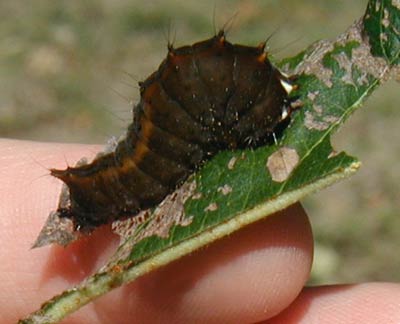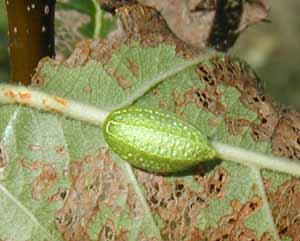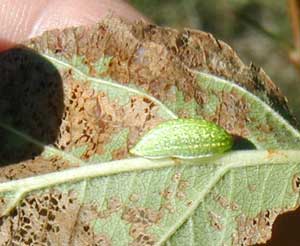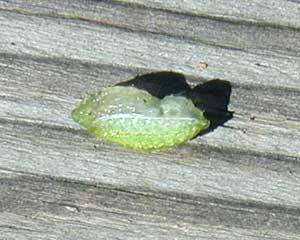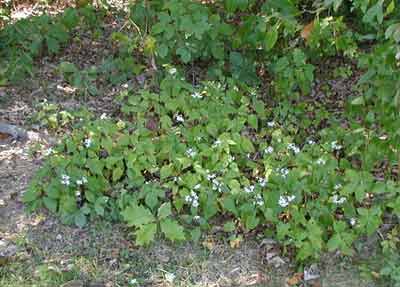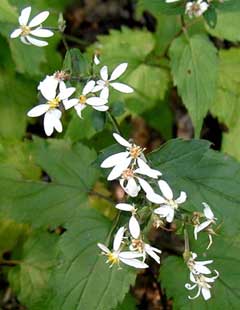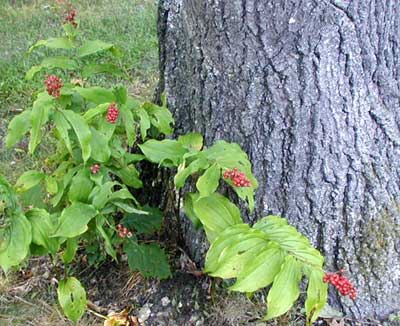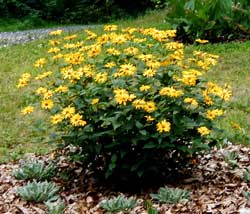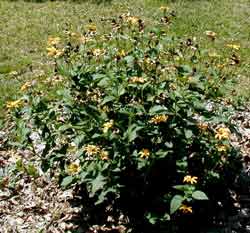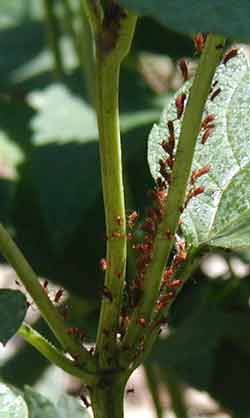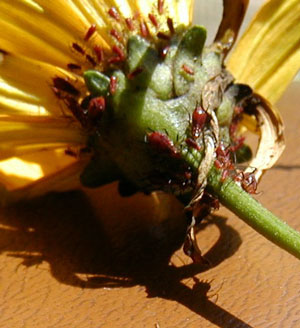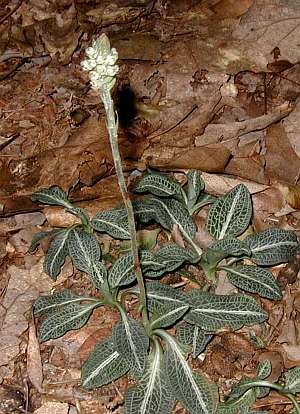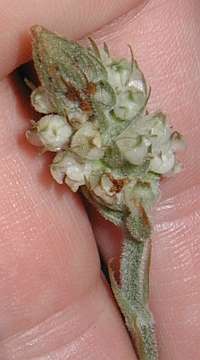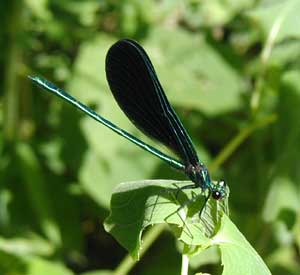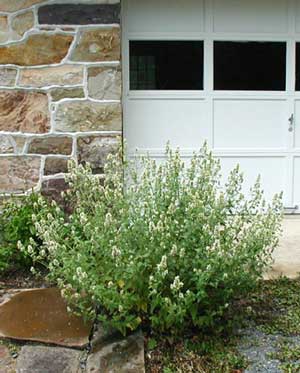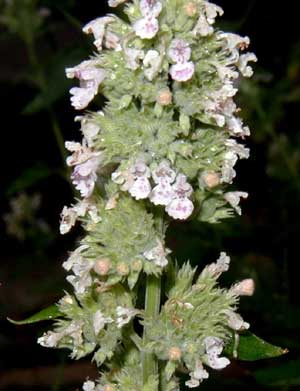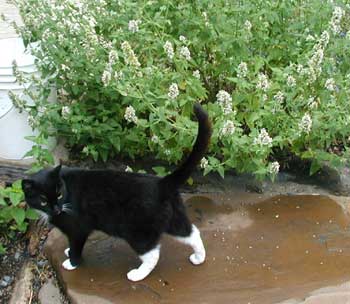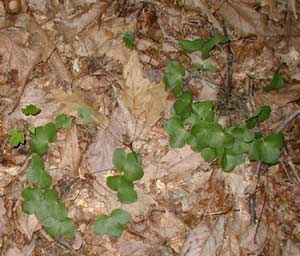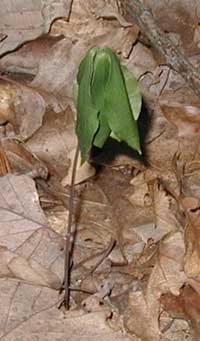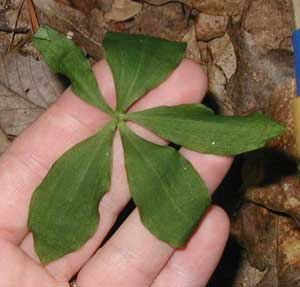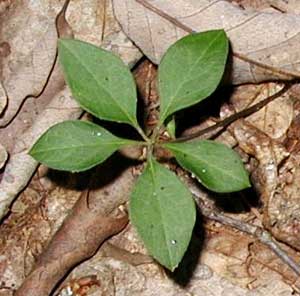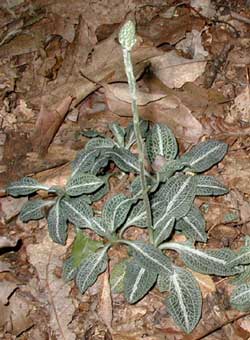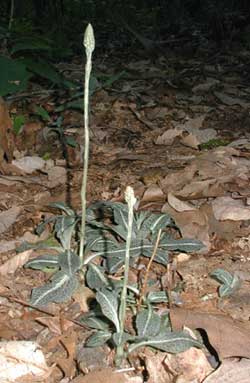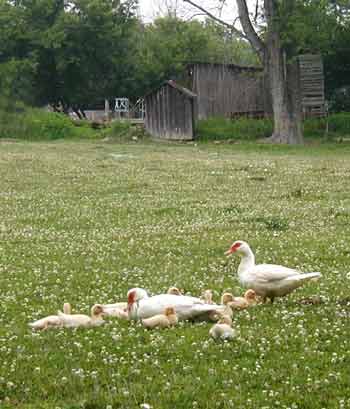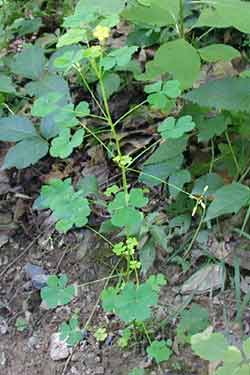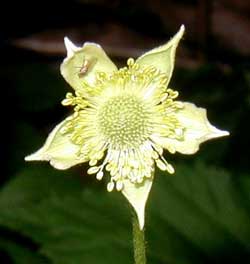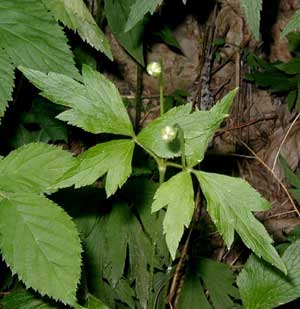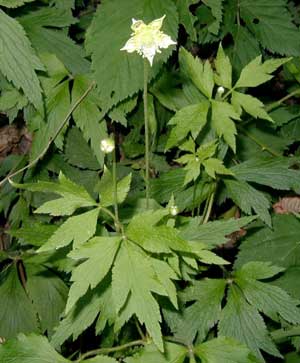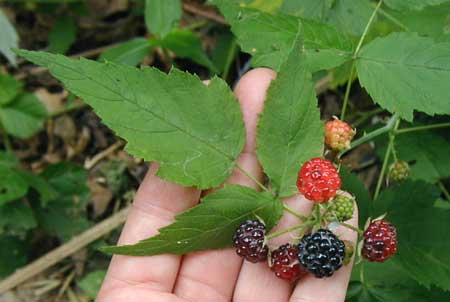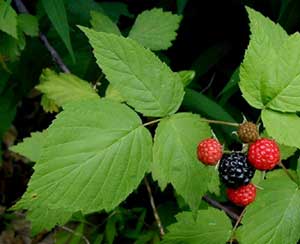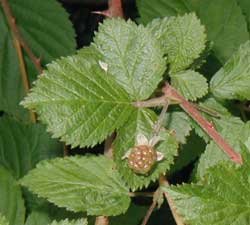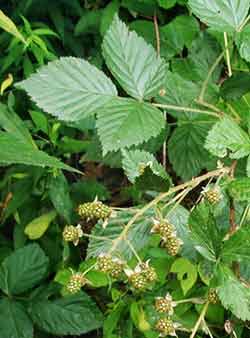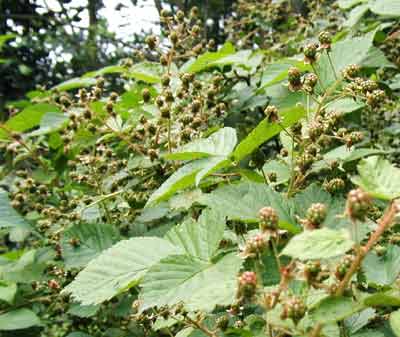July is a quiet time in the mixed hardwoods forest of Northeastern United States, at least with respect to wildflowers. The hungry bears wander around this time of year seeking berries and other goodies, so I can’t say it’s completely still out there. We’ve been seeing a few deer wandering around during the day and near the house somebody had an encounter with a skunk. P U!
My walking stick gave me a sense of courage on my flower walk this morning and would come in handy if I had to get around some brambles. I was searching for three things and was very glad to find them all.
First, I was curious about the foliage of the Round-Lobed Hepatica. Having spotted a set of new leaves this Spring on one plant (see April archives), I wondered if they were now much larger and at ground level with the other older leaves. To my disappointment I found that some critter had eaten them.
Leaves of two hepatica plants spread out in a circle and rest on the forest floor.
Second, I sought the colony of Small Whorled Pogonia, Isotria medeoloides, on the north side of the ridge. For three years now I have been watching and waiting to see if these plants will bloom. Field guides state that the plant doesn’t come up for years at a time, perhaps even resting for ten years between appearances. Each year I have seen the plants, but no blossoms – yet. Maybe next year these members of the Orchis family will have gained enough energy to treat us to their fleeting display.
The summer heat and lack of rainfall seems to have wilted the small whorled pogonia.
Small whorled pogonia typically holds its parallel-veined leaves horizontally.
At first glance one might confuse gaywing’s, Polygala paucifolia, leaves with pogonia’s leaves. However, the pogonia leaves are on a taller stem, have parallel veins, and are larger than those of fringed polygala.
Fringed polygala leaves look similar to pogonia leaves, but are smaller, lay closer to the ground, and have branched veins.
Number three on my list, Downy Rattlesnake Plantain, flowers in mid-summer, so I searched for a blooming plant on my wildflower walk this morning. A dozen or so small colonies of this member of the Orchis family, Goodyera pubescens, were spotted. Only two individuals sent up their flower stalk and are almost ready to bloom.
The dark, distinctive foliage of Downy Rattlesnake Plantain contrasts nicely with the tan and brown leaves on the forest floor.
The taller flower stalk measures about six inches now and will double in height as the young orchids mature.
Somehow it is so satisfying knowing that three wild orchid species presently share our piece of the woods with us. The three Orchis family members include the Downy Rattlesnake Plantain, the Small Whorled Pogonia and the Pink Lady’s Slipper. None are flowering at this moment, but stay tuned for more news from the woods of Pennsylvania. Later this month I hope to catch the flowers of Downy Rattlesnake Plantain.

